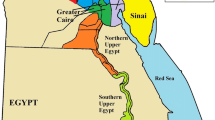Abstract
We identified 15 regions of >1 Mb in the human genome composed of large ancient local duplications corresponding to gene deserts. We detected these intrachromosomal duplications in mouse and dog but not in chicken; they present as patches of similarity as low as 60%. These findings suggest that some human gene deserts originated from duplications of segments lacking genes in a mammalian common ancestor.

Similar content being viewed by others
References
Lander, E.S. et al. Nature 409, 860–921 (2001).
Waterston, R.H. et al. Nature 420, 520–562 (2002).
Hillier, L.W. et al. Nature 434, 724–731 (2005).
Hattori, M. et al. Nature 405, 311–319 (2000).
Hillier, L.W. et al. Nature 432, 695–716 (2004).
Grimwood, J. et al. Nature 428, 529–535 (2004).
Hedges, S.B. Nat. Rev. Genet. 3, 838–849 (2002).
Ovcharenko, I. et al. Genome Res. 15, 137–145 (2005).
Nobrega, M.A. et al. Science 302, 413 (2003).
Pevzner, P. & Tesler, G. Proc. Natl. Acad. Sci. USA 100, 7672–7677 (2003).
Nobrega, M.A. et al. Nature 431, 988–993 (2004).
Bailey, J.A. et al. Science 297, 1003–1007 (2002).
Samonte, R.V. & Eichler, E.E. Nat. Rev. Genet. 3, 65–72 (2002).
Iafrate, A.J. et al. Nat. Genet. 36, 949–951 (2004).
Acknowledgements
We thank K. Murakami, Y. Hayakawa and technical staff of RIKEN Genomic Sciences Center for technical assistance; H. Watanabe, T. Kojima and T. Taniguchi for discussions and comments on the manuscript; and the providers of the dog genome sequencing project (The Broad Institute and Agencourt Bioscience) for use of the genomic data in public databases before publication. This work was supported in part by grants from the Ministry of Education, Culture, Sports, Science and Technology of Japan.
Author information
Authors and Affiliations
Corresponding authors
Ethics declarations
Competing interests
The authors declare no competing financial interests.
Supplementary information
Supplementary Fig. 1
Dot-matrix analysis for the comparison of human gene deserts containing LADs with mouse, dog and chicken sequences. (PDF 536 kb)
Supplementary Table 1
Genes flanking LADs or the gene deserts containing LADs are listed from the Ensembl dataset. (PDF 87 kb)
Rights and permissions
About this article
Cite this article
Itoh, T., Toyoda, A., Taylor, T. et al. Identification of large ancient duplications associated with human gene deserts. Nat Genet 37, 1041–1043 (2005). https://doi.org/10.1038/ng1648
Received:
Accepted:
Published:
Issue Date:
DOI: https://doi.org/10.1038/ng1648
- Springer Nature America, Inc.
This article is cited by
-
Genome Desertification in Eutherians: Can Gene Deserts Explain the Uneven Distribution of Genes in Placental Mammalian Genomes?
Journal of Molecular Evolution (2009)





